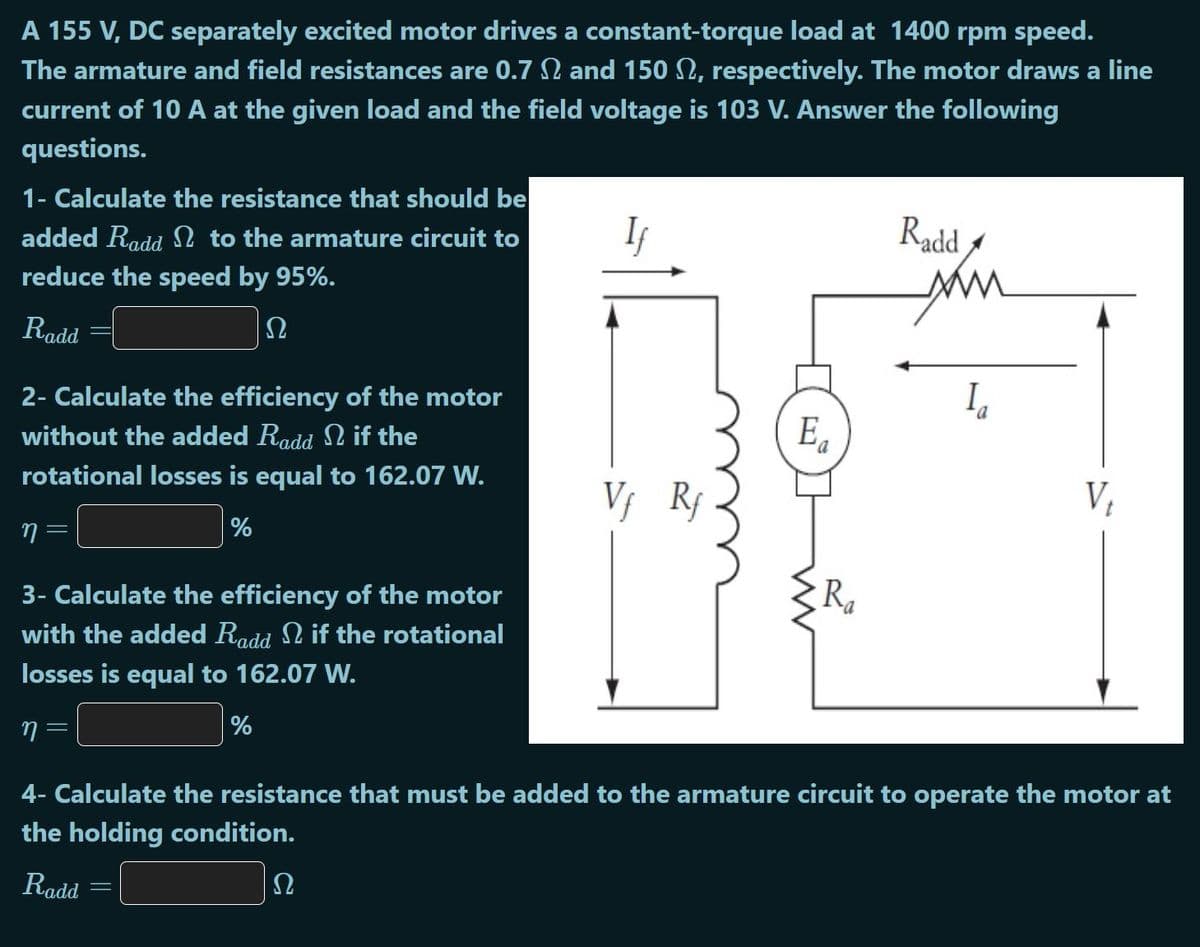A 155 V, DC separately excited motor drives a constant-torque load at 1400 rpm speed. The armature and field resistances are 0.7 N and 150 N, respectively. The motor draws a line current of 10 A at the given load and the field voltage is 103 V. Answer the following questions. 1- Calculate the resistance that should be added Radd 2 to the armature circuit to If Radd 1 reduce the speed by 95%.
A 155 V, DC separately excited motor drives a constant-torque load at 1400 rpm speed. The armature and field resistances are 0.7 N and 150 N, respectively. The motor draws a line current of 10 A at the given load and the field voltage is 103 V. Answer the following questions. 1- Calculate the resistance that should be added Radd 2 to the armature circuit to If Radd 1 reduce the speed by 95%.
Delmar's Standard Textbook Of Electricity
7th Edition
ISBN:9781337900348
Author:Stephen L. Herman
Publisher:Stephen L. Herman
Chapter5: Resistors
Section: Chapter Questions
Problem 1PA
Related questions
Question

Transcribed Image Text:A 155 V, DC separately excited motor drives a constant-torque load at 1400 rpm speed.
The armature and field resistances are 0.7 N and 150 2, respectively. The motor draws a line
current of 10 A at the given load and the field voltage is 103 V. Answer the following
questions.
1- Calculate the resistance that should be
added Radd 2 to the armature circuit to
Radd
reduce the speed by 95%.
Radd
Ω
2- Calculate the efficiency of the motor
without the added Radd N if the
E.
I,
rotational losses is equal to 162.07 W.
V; Rf
V,
%
3- Calculate the efficiency of the motor
Ra
with the added Radd N if the rotational
losses is equal to 162.07 W.
n =
%
4- Calculate the resistance that must be added to the armature circuit to operate the motor at
the holding condition.
Radd
U
Expert Solution
This question has been solved!
Explore an expertly crafted, step-by-step solution for a thorough understanding of key concepts.
This is a popular solution!
Trending now
This is a popular solution!
Step by step
Solved in 5 steps with 9 images

Knowledge Booster
Learn more about
Need a deep-dive on the concept behind this application? Look no further. Learn more about this topic, electrical-engineering and related others by exploring similar questions and additional content below.Recommended textbooks for you

Delmar's Standard Textbook Of Electricity
Electrical Engineering
ISBN:
9781337900348
Author:
Stephen L. Herman
Publisher:
Cengage Learning

Delmar's Standard Textbook Of Electricity
Electrical Engineering
ISBN:
9781337900348
Author:
Stephen L. Herman
Publisher:
Cengage Learning